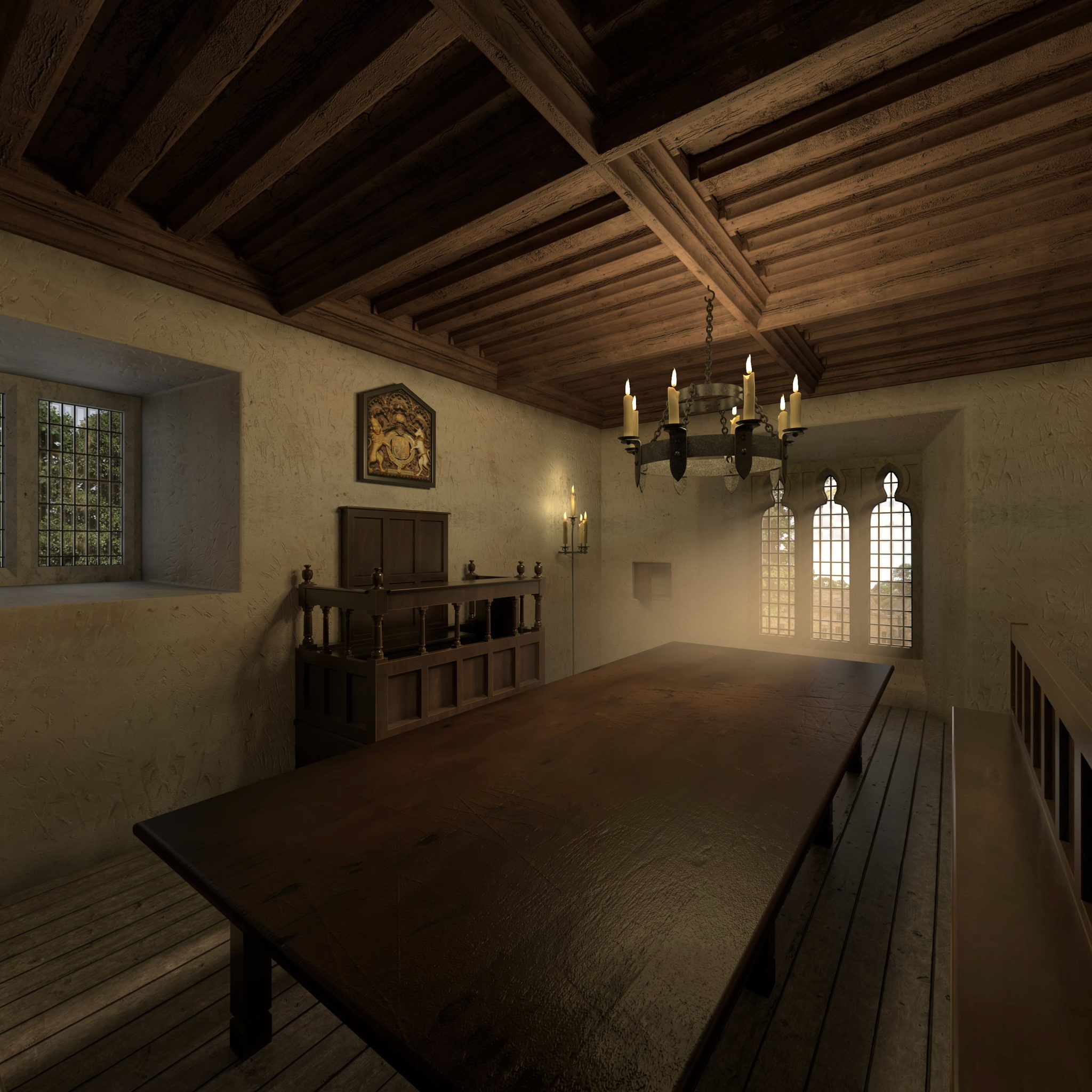The Exchequer Building
The Exchequer is the oldest part of the buildings which make up Palace Green Library, and is Grade I listed by Historic England. It was constructed by Bishop Robert Neville between 1438 and 1457 and you can see his coat of arms on the outside of the building. Born at Raby Castle, he belonged to one of the most powerful families in the North of England.
The special status of the Bishops of Durham as ‘Prince Bishops’ meant that, as well as overseeing the religious wellbeing of the people of Durham, they had the right to raise an army, mint their own coins, and levy taxes.
The Exchequer was an administrative building dealing with the Bishop’s extensive legal and financial transactions and held the documents to prove his ownership of his vast land holdings. The walls would have been lined with medieval document presses – large oak cupboards for holding deeds and accounts, one example of which still survives.
The building also held the Chancery Court, where land disputes were settled, and had a dungeon.
The Exchequer has been extensively altered over the years, most notably by Bishop Cosin in the 17th century and then by the University in the 19th century. During this period, an archive strong room was inserted in the dungeon, using heavy metal shutters on the windows and a massive safe door.
Today, the building houses two of the University’s historic libraries; Bamburgh and Routh, as well as high-tech heritage science equipment and a team of digitisers (in the dungeon), photographing - and putting online - our historic collections.
Find out more



/prod01/channel_4/things-to-do/media/things-to-do/historic-libraries-at-palace-green/Buildings_01-2-1920X290.jpg)